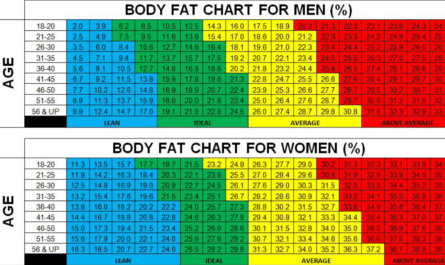If you’re a parent or guardian, monitoring your child’s growth and development is essential. One of the most common ways to track a child’s growth is through a chart that displays the average height and weight of children of different ages. In this article, we will explore the importance of these charts, how they are constructed, and how they can be used to assess a child’s growth. So let’s dive in and understand the significance of the chart of height and weight for children.
What is Growth Charts
Growth charts are tools used to monitor and compare a child’s height and weight measurements with established norms for their age and gender. These charts visually represent a child’s growth patterns over time, allowing for early identification of potential issues or delays.
Importance of Height and Weight Charts
Height and weight charts provide valuable information about a child’s growth trajectory. By comparing a child’s measurements to the standard growth curve, parents can determine if their child is within the expected range or if further evaluation is needed. These charts can help identify growth spurts, track overall growth trends, and detect potential growth disorders.

How to check the Child’s Height and weight?
To check a child’s height and weight, you can follow these steps:
1. Height measurement:
- Stand the child against a wall without shoes.
- Make sure their heels, back, and head are touching the wall.
- Use a flat object (like a book) to press against the top of their head, keeping it parallel to the floor.
- Mark the spot on the wall where the bottom of the object touches.
- Use a measuring tape to measure the distance from the floor to the marked spot. This measurement represents the child’s height.
2. Weight measurement:
- Use a weighing scale that can support the child’s weight.
- Ensure the child removes any heavy clothing or accessories before weighing.
- Ask the child to stand still on the scale with both feet placed evenly.
- Read the weight measurement displayed on the scale. This measurement represents the child’s weight.
It’s important to note that these measurements provide a snapshot of the child’s height and weight at a specific time. Regularly monitoring a child’s growth is recommended to track their development over time. If you have concerns about your child’s growth, consult a healthcare professional for a comprehensive evaluation.
Height and Weight Chart for Boys
| Age | Weight (Pounds) | Length (Inches) |
|---|---|---|
| Birth | 2.6 | 47.1 |
| 3mts | 5.3 | 59.1 |
| 6mts | 6.7 | 64.7 |
| 9mts | 7.4 | 68.2 |
| 1 yr | 8.4 | 73.9 |
| 2 yrs | 10.1 | 81.6 |
| 3 yrs | 11.8 | 88.9 |
| 4 yrs | 13.5 | 96.0 |
| 5 yrs | 14.8 | 102.1 |
| 6 yrs | 16.3 | 108.5 |
| 7 yrs | 18.0 | 113.9 |
| 8 yrs | 19.7 | 119.3 |
| 9 yrs | 21.5 | 123.7 |
| 10 yrs | 23.5 | 124.4 |
| 11 yrs | 27.7 | 134.3 |
| 12 yrs-13 yrs | 30.6-35.0 | 137.7-143.3 |
| 14 yrs-15 yrs | 37.6-40.9 | 146.8-153.6 |
Height and Weight Chart for Girls
| Age | Weight (Pounds) | Length (Inches) |
|---|---|---|
| Birth | 2.6 | 46.7 |
| 3mts | 5.0 | 58.4 |
| 6mts | 6.2 | 63.7 |
| 9mts | 6.9 | 67.0 |
| 1 yr | 7.8 | 72.5 |
| 2 yrs | 9.6 | 80.1 |
| 3 yrs | 11.2 | 87.7 |
| 4 yrs | 12.9 | 94.5 |
| 5 yrs | 14.5 | 101.4 |
| 6 yrs | 16.0 | 107.4 |
| 7 yrs | 17.6 | 112.8 |
| 8 yrs | 19.4 | 118.2 |
| 9 yrs | 21.3 | 122.9 |
| 10 yrs | 23.6 | 123.4 |
| 11 yrs | 28.9 | 134.4 |
| 12 yrs-13 yrs | 32.8-38.9 | 139.2-147.4 |
| 14 yrs-15 yrs | 40.3-42.0 | 151.2-152.4 |
Understanding the Chart
To effectively utilize the height and weight chart for children, it’s essential to understand its components and how to interpret the data. Here’s a breakdown of the key elements:
1. Age Categories
The chart is divided into different age categories, usually ranging from birth to 18 years. Each category represents a specific age group, allowing for accurate comparisons based on your child’s age.
2. Height and Weight Percentiles
The chart displays height and weight percentiles, representing the percentage of children of the same age and gender with similar measurements. For example, if your child falls within the 75th percentile for height, it means they are taller than 75% of children their age.
3. Growth Curves
The chart includes growth curves that show the typical patterns of height and weight gain over time. These curves help visualize the expected growth trajectory for children within each age category.
4. Standard Deviation Lines
Standard deviation lines on the chart indicate the variability of height and weight measurements. They provide a range of values that can be considered within the normal range for a given age group.
FAQs
1. How often should I measure my child’s height and weight?
It is recommended to measure your child’s height and weight at least once a year. However, more frequent measurements can provide a more accurate picture of their growth.
2. What should I do if my child’s measurements fall outside the normal range on the chart?
If your child’s measurements deviate significantly from the normal range, it is advisable to consult a healthcare professional. They can assess your child’s growth and provide further guidance or necessary interventions.
3. Can genetics influence a child’s height and weight?
Yes, genetics play a significant role in determining a child’s height and weight. However, other factors such as nutrition and overall health also contribute to their growth.
4. Are there separate charts for boys and girls?
Yes, the height and weight chart for children typically includes separate charts for boys and girls. This is because growth patterns can vary between genders.
5. Does the chart of height and weight for children apply to all ethnicities?
While the chart provides a general guideline for growth, it is worth noting that there can be variations in growth patterns among different ethnicities. Healthcare professionals take this into account when assessing a child’s growth.
6. When to Consult a Healthcare Professional?
While a height and weight chart is useful for monitoring a child’s growth, it is not a definitive diagnostic tool. If you have concerns about your child’s growth or notice any significant deviations from the expected pattern, it is best to consult a healthcare professional. They can provide a comprehensive evaluation and determine if further assessments or interventions are necessary.






